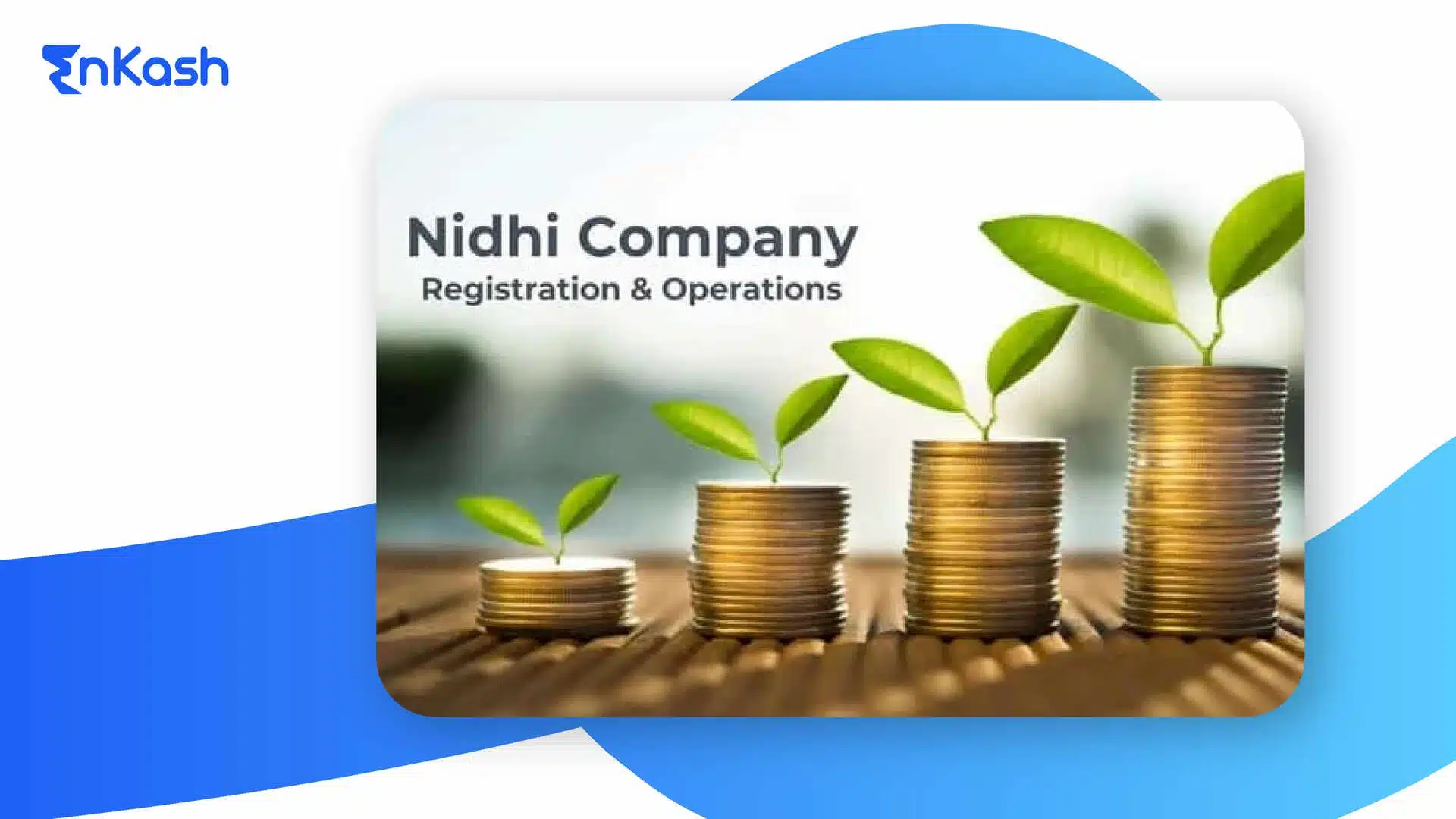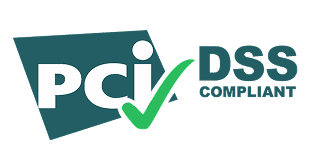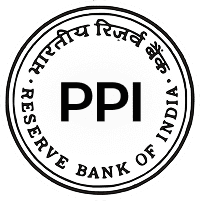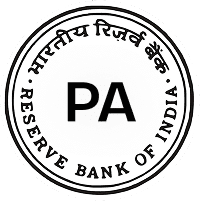The cost of debt is the total interest paid on a borrowed debt. The cost of debt formula and calculation process help businesses make decisions regarding their financing strategies. The cost of debt is influenced by interest rates, tax benefits, etc. It directly influences a company’s capital structure by making it an integral part of financial management.
What is the Cost of Debt?
The interest rate that a company pays on the money it obtains from lenders is referred to as the cost of debt. For instance, if a company borrows money, the company has to pay interest on the amount it borrowed. The interest rate on a loan taken by the company represents its cost of borrowing. Businesses use this calculation to determine how much their borrowing is costing them in total.
Importance of Understanding the Cost of Debt
The cost of debt can be associated with an ordinary loan, a bond, or other debt instruments. It is key to a company’s overall financial health, as it affects decisions about profitability and capital structure.
Impact on Profitability
The most important reason why businesses need to know the cost of their debt is that the cost of interest payments directly affects profitability. When the debt is used for investment, it acts as a recurring expense that reduces the company’s net income unless the return from the investment is more than the compensation for the cost of debt. When the investment project is profitable, the financial leverage gained by borrowing increases the company’s profits.
Influencing Capital Structure Decisions
The cost of debt also plays a vital role in shaping a company’s capital structure. Businesses must strike the right balance between debt and equity financing to optimise their cost of capital. Firms with a high cost of debt would rather raise funds through equity than through expensive interest payments on debt. Meanwhile, firms with a low cost of debt would rather borrow as there are tax advantages associated with debt financing over equity financing.
Tax Benefits
Interest expenses on debt are tax-deductible. By deducting interest expenses, companies reduce their taxable incomes, so they potentially pay less in taxes, lowering the aggregate cost of debt. Because dividend payments for equity financing are not tax-deductible, debt financing is often favoured over equity financing.
Risk Management
The cost of debt is an important factor in risk management as well. Companies with too much debt in their capital structure can find themselves in trouble if interest rates rise and their cashflows become more uncertain. Increased debt service can trigger financial distress. By monitoring and managing their cost of debt, businesses can minimise risk and ensure a stable financial foundation.
Investor and Lender Confidence
Investors and lenders often assess a company’s cost of debt to gauge its financial health and creditworthiness. A low cost of debt indicates that the company can borrow at favorable rates, which reflects positively on its risk profile. On the other hand, a high cost of debt might reflect financial instability or too much leverage, which can encourage investors.
How to Calculate Cost of Debt
Businesses need two key figures to calculate the cost of debt. These are-
- The total interest they have paid on their debt over a certain period (usually a year).
- The total amount of their debt (how much they owe).
Once these two numbers are known, the basic cost of debt is found by dividing the total interest paid by the total debt. This clearly shows how much the company is paying in interest for every rupee it borrows.
Example of Cost of Debt Calculation
Suppose a company raised ₹1 crore by borrowing from a bank at an annual interest rate of 8% and then paid back the ₹1.08 crore to the bank. The unadjusted cost of debt would be: Without taxes, the cost of debt is simple.
Total Interest Paid / Total Debt = ₹8,00,000 / ₹1,00,00,000= 8%
Yet, when we include the tax benefit, the company saves money. For instance, if the company pays tax at the rate of 30%, then the tax deduction brings down the actual cost of debt. Hence, the cost to the company is lower than 8%.
Also read: Capital Budgeting
Role of Taxes on The Cost of Debt
A company’s cost of debt is usually lower than the interest rate it pays on its loans because of the tax benefits. Generally, interest payments are tax-deductible, as they allow the company to reduce its taxable income at the rate of interest paid. Thus, it reduces the effective cost of debt.
Effect of Different Types of Taxes on Cost of Debt
Pre-tax is the interest rate the company pays, and after-tax is what the company actually pays after receiving the tax benefits. The after-tax number gives a more accurate picture of the actual cost of borrowing.
Key Concepts of Cost of Debt
Tax shields, the distinction between secured and unsecured debt, and market conditions are key factors in the cost of debt. These factors are discussed below:
The Tax Shield
The interest payments on debt are ‘tax-deductible.’ The paid interest can be deducted from a company’s taxable income, reducing the overall cost of debt. For instance, if a company pays ₹10 lakh in interest and is within the 30% tax bracket, the tax shield allows it to reduce its taxable income by ₹10 lakh, thereby reducing its tax bill substantially.
This tax shield allows debt financing to be less costly than equity financing. In equity financing, dividends are not tax-deductible. Thus, companies can reduce the cost of their debt and have the ability to invest more in growth with the tax shield.
Secured vs. Unsecured Debt
Secured debt is backed by an asset such as property or equipment. Since the collateral reduces the lender’s risk, secured debt has a lower interest rate. For instance, a business loan secured by real estate will cost less than an unsecured loan.
In contrast, there is no collateral required for unsecured debt, so the lender takes a bigger risk, and it’s more likely that they will charge a higher interest rate. It means that the total cost of debt will increase for the borrower.
Fixed vs. Variable Interest Rates
Interest rates associated with debt can also affect the cost of debt. Fixed interest rates are constant throughout the life of the loan. This helps businesses to plan their long-term finances since they know exactly the amount of interest they will have to pay each month. However, fixed-rate loans may have slightly higher rates to compensate for market fluctuations.
On the other hand, variable interest rates fluctuate based on market conditions, such as the Reserve Bank of India’s lending rate. While businesses may benefit from lower interest rates during favourable market conditions, they also run the risk of rising interest payments if rates increase. Variable rates can introduce volatility into a company’s financial planning, potentially raising its cost of debt.
Market Conditions and Creditworthiness
A company’s cost of debt is heavily influenced by overall market conditions and its creditworthiness. During periods of economic growth and stability, interest rates are generally lower, making borrowing more affordable. In contrast, during economic downturns or when inflation rises, interest rates tend to increase, making debt more expensive for companies.
Additionally, a company’s credit rating plays a significant role in determining its cost of debt. A higher credit rating means the company is perceived as less risky, allowing it to borrow at lower interest rates. Companies with lower credit ratings face higher borrowing costs because lenders see them as higher-risk borrowers.
Also Read: Tips to Increase your CIBIL Score
The Maturity of Debt
The maturity, or duration, of debt can also impact its cost. Short-term debt comes with lower interest rates but needs to be repaid sooner and can lead to liquidity challenges. Long-term debt provides more time to repay but often comes with higher interest rates, increasing the cost of debt over time. Businesses must balance the benefits of short- and long-term borrowing based on their cash flow and financial goals.
Advantages of Debt Financing
Debt financing is one of the most common ways businesses fund their operations and growth. Some of the major advantages of debt financing are Tax Benefits, retention of ownership, predictable repayment, and cost of capital. These advantages are as follows:
Tax Benefits
All interest payments on loans are tax deductible. Hence, companies can reduce their taxable income through interest payments. For example, if a company pays ₹5 lakh of interest in a year, it will receive a tax benefit, which will reduce its net burden.
Retention of Ownership
Debt financing allows businesses to raise capital without giving up ownership. When companies issue equity, they dilute their existing ownership structure, which can lead to reduced control over decision-making. Debt, on the other hand, allows business owners to retain full control of their company while still accessing necessary funds.
Predictable Repayment
Debt comes with fixed interest rates and repayment schedules, making it easier for companies to plan their financial future. Predictable payments help with proper budget management and forecasting, allowing businesses to manage their cash flow effectively. This stability is particularly advantageous for companies that have consistent revenue streams and can reliably make scheduled debt payments.
Cost of Capital
In many cases, debt financing can be cheaper than equity financing, especially if a business has a low cost of debt due to favourable interest rates or high creditworthiness. Additionally, debt financing avoids the dilution of equity, ensuring that profits generated from the borrowed funds are not shared with new shareholders.
Disadvantages of Debt Financing
The most important disadvantage of debt financing is the repayment system, which always exceeds the borrowed amount. More disadvantages are discussed below in a detailed manner:
Repayment Obligations
One of the main drawbacks of debt financing is the obligation to make regular interest and principal payments. Even if the business experiences a downturn in sales or profits, the debt still needs to be repaid. Failure to meet repayment obligations can result in penalties, damage to the company’s credit rating, and even bankruptcy in extreme cases.
Increased Financial Risk
Taking on too much debt increases a company’s financial risk. As debt levels rise, so do interest payments, which can strain a company’s cash flow and make it difficult to cover operating expenses. Companies with high levels of debt may also struggle to secure additional financing in the future, as lenders and investors could perceive them as risky.
Also Read: Difference between Cost and Financial Accounting
Higher Interest Costs for Lower Credit Ratings
Companies with lower credit ratings or those seen as high-risk borrowers often face higher interest rates on their debt, which increases their cost of debt. This can make debt financing expensive for businesses that already struggle with cash flow, and it may limit their ability to take advantage of new opportunities or expand operations.
Impact on Cash Flow
Debt financing requires consistent cash flow to meet interest payments. Businesses that rely heavily on debt may find themselves in a position where most of their revenue goes toward servicing their debt, leaving less money for reinvestment or operational improvements. This can stifle growth and innovation, particularly for smaller companies or startups with limited cash reserves.
Debt financing offers businesses the opportunity to raise capital while retaining ownership and benefiting from tax deductions. However, it also comes with the burden of repayment obligations, increased financial risk, and potential strain on cash flow. The decision to take on debt should always be weighed against a company’s ability to manage these challenges and its overall financial strategy.
Also Read: Cash Flow Analytics
How to Control the Cost of Debt?
It is important to manage the cost of debt effectively to maintain financial stability and long-term growth. There are multiple ways to control the cost of debt. They have been discussed below:
Improve Creditworthiness
A company’s credit rating plays a significant role in determining its cost of debt. Lenders view companies with higher credit scores as less risky and are more likely to offer loans at lower interest rates. Businesses can improve their creditworthiness by maintaining a healthy balance between debt and equity, paying off existing debt on time, and managing cash flow effectively.
Refinance High-Interest Debt
If a business has existing loans with high interest rates, refinancing could be a viable solution. Refinancing involves taking out a new loan at a lower interest rate to pay off the older, more expensive debt. By securing a loan with better terms, companies can reduce their cost of debt and save on interest payments over time.
Negotiate Better Terms with Lenders
Businesses can also control their cost of debt by negotiating more favourable terms with lenders. This could involve requesting lower interest rates, extending the repayment period, or even restructuring the loan entirely to make it more manageable.
Take Advantage of Tax Deductions
Interest payments on debt are tax-deductible, which provides businesses with a significant opportunity to reduce their effective cost of debt. By leveraging this tax benefit, companies can lower their taxable income and, in turn, reduce the overall cost of borrowing.
Maintain a Balanced Debt-to-Equity Ratio
One of the best ways to manage the cost of debt is to maintain a healthy balance between debt and equity. A company with too much debt might face high-interest payments, while too little debt could mean missing out on potential growth opportunities. By striking the right balance, companies can optimise their capital structure and minimise their overall cost of borrowing.
Use Fixed-Rate Loans When Possible
Variable-rate loans can be unpredictable and may lead to rising interest payments if market conditions change. By opting for fixed-rate loans, businesses can lock in a consistent interest rate for the duration of the loan, providing more financial stability and control over their cost of debt.
Fixed-rate loans offer protection against fluctuating market rates, ensuring that businesses are not caught off-guard by unexpected increases in their borrowing costs. This predictability allows for better budgeting and financial planning over the long term.
By improving creditworthiness, refinancing high-interest debt, negotiating better loan terms, and leveraging tax benefits, businesses can effectively manage and control their cost of debt. Maintaining a balanced debt-to-equity ratio and opting for fixed-rate loans when possible also help companies borrow responsibly and control their borrowing costs.
Conclusion
The cost of debt plays a critical role in determining a company’s financial health and its ability to manage borrowing effectively. Businesses can make informed decisions about their capital structure by understanding the key factors influencing the cost of debt, such as interest rates, tax benefits, creditworthiness, and market conditions.
Managing the cost of debt through strategies like improving credit scores, refinancing high-interest loans, and maintaining a balanced debt-to-equity ratio can lead to reduced financial risk and lower borrowing costs.
Additionally, leveraging the tax-deductible nature of interest payments and opting for fixed-rate loans provides companies with opportunities to further control their debt costs. Maintaining manageable debt levels ensures that businesses can invest in growth while minimizing financial strain.
In summary, businesses that effectively monitor and manage their cost of debt are better positioned to optimise their capital, reduce risk, and achieve long-term financial sustainability.
FAQs Related to Cost of Debt
How does the cost of debt impact a company’s ability to raise future capital?
The cost of debt directly influences a company’s ability to raise future capital because lenders and investors assess the company’s existing debt levels when considering new investments. If the cost of debt is too high, it can signal to lenders that the company is taking on too much risk, leading to higher interest rates on future loans. Additionally, a company with a high debt burden might struggle to attract equity investors, as they may see the business as financially strained. A well-managed cost of debt can improve the company’s creditworthiness and make it more attractive to both lenders and investors.
Can reducing the cost of debt improve a company’s stock price?
Yes, reducing the cost of debt can improve a company’s stock price. Lower debt costs mean the company has more free cash flow available for reinvestment, expansion, or shareholder returns, all of which can positively impact the stock price. Additionally, a lower cost of debt signals to the market that the company is managing its finances well, which can boost investor confidence. As a result, shareholders may see improved returns through dividends or capital appreciation, potentially leading to a rise in stock value.
How do economic conditions affect the cost of debt?
During periods of low interest rates, companies can borrow at lower costs, reducing their cost of debt. Conversely, in high inflation or rising interest rate environments, borrowing becomes more expensive, increasing the cost of debt. Additionally, economic downturns can reduce a company’s ability to generate revenue, making it harder to meet debt obligations, which can lead to higher borrowing costs if the company’s creditworthiness is affected.
What role does a company’s debt maturity play in controlling its cost of debt?
Whether short-term or long-term, the maturity of a company’s debt affects its cost of debt. Short-term debt typically has lower interest rates but requires more frequent refinancing, which can be risky if interest rates rise. Long-term debt locks in the borrowing cost for a longer period, but it usually comes with higher interest rates. Balancing short-term and long-term debt maturities can help control overall debt costs while providing financial flexibility.
How can small businesses reduce their cost of debt?
Small businesses can reduce their cost of debt by improving their creditworthiness, negotiating better loan terms, and exploring government-backed loans that may offer lower interest rates. Additionally, building strong relationships with financial institutions and consistently meeting debt obligations can lead to more favorable terms in future financing. Small businesses may also consider refinancing high-interest debt during periods of lower market interest rates, which can significantly reduce their overall borrowing costs.
Can a company’s industry influence its cost of debt?
Yes, the industry in which a company operates can influence its cost of debt. Lenders assess industry-specific risks when determining interest rates. For example, industries with volatile revenue streams, such as real estate or technology startups, may face higher borrowing costs due to increased financial uncertainty. In contrast, companies in stable industries, like utilities or consumer goods, may benefit from lower interest rates because they are perceived as lower risk. Understanding industry trends and challenges can help companies anticipate and manage their cost of debt.
How do different countries’ tax laws impact the cost of debt for multinational companies?
For multinational companies, tax laws in different countries can significantly affect the cost of debt. Some countries offer more favourable tax treatments for interest payments, allowing businesses to reduce their taxable income through a tax shield. Other countries may have stricter limits on interest deductibility, raising the effective cost of debt. Multinational companies often engage in tax planning strategies to optimise their cost of debt across different jurisdictions by borrowing in countries with more favourable tax laws.
What are the risks of relying too heavily on debt financing?
High debt levels lead to increased interest payments, which can strain cash flow and make it difficult to cover other operational expenses. Additionally, during economic downturns or periods of low revenue, businesses with high debt may struggle to meet their repayment obligations, increasing the risk of default or bankruptcy. Over-leveraging can also limit a company’s ability to secure additional financing in the future.
How does the cost of debt affect mergers and acquisitions (M&A)?
The cost of debt plays a significant role in mergers and acquisitions (M&A) because it affects the overall cost of financing the deal. Companies that can borrow at lower interest rates can finance acquisitions more affordably, improving the return on investment. Additionally, companies involved in M&A may need to evaluate the debt levels of both entities to ensure that the combined company’s cost of debt remains manageable and does not hinder future growth.
Can the cost of debt change over time for a company?
Yes, the cost of debt can change over time due to fluctuations in interest rates, changes in the company’s credit rating, and shifts in market conditions. For instance, if a company improves its financial health and credit score, it may be able to refinance its debt at a lower interest rate, reducing the cost of debt. Conversely, if the company’s financial performance declines or interest rates rise, its cost of debt may increase, leading to higher borrowing costs.








